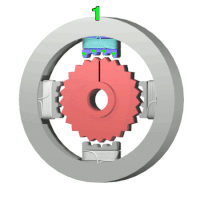
Patellofemoral Pain Syndrome Modifies the Movement of the Rearfoot, but It Does Not Alter Plantar Pressure Distribution *
Sign Up to like & getrecommendations! Published in 2020 at "Revista Brasileira de Ortopedia"
DOI: 10.1055/s-0039-1698802
Abstract: Objective To compare the plantar pressure distribution and the kinematics of the rearfoot on the stance phase of subjects with or without patellofemoral pain syndrome (PFPS). Methods A total of 26 subjects with PFPS and… read more here.
Keywords: plantar pressure; pressure distribution; rearfoot; plantar ... See more keywords

Forefoot running requires shorter gastrocnemius fascicle length than rearfoot running
Sign Up to like & getrecommendations! Published in 2019 at "Journal of Sports Sciences"
DOI: 10.1080/02640414.2019.1610146
Abstract: ABSTRACT This study aimed to investigate the influence of foot strike patterns on the behaviour of the triceps surae muscle-tendon unit, including the Achilles tendon whose length nearly corresponds to force of the triceps surae,… read more here.
Keywords: length; forefoot; rearfoot; rearfoot running ... See more keywords

Standard reference values of the postural control in healthy female adults aged between 31 and 40 years in Germany: an observational study
Sign Up to like & getrecommendations! Published in 2020 at "Journal of Physiological Anthropology"
DOI: 10.1186/s40101-020-00229-7
Abstract: Background To detect deviations from a normal postural control, standard values can be helpful for comparison purposes. Since the postural control is influenced by gender and age, the aim of the present study was the… read more here.
Keywords: aged years; control; study; postural control ... See more keywords

Increasing Step Rate Affects Rearfoot Kinematics and Ground Reaction Forces during Running
Sign Up to like & getrecommendations! Published in 2021 at "Biology"
DOI: 10.3390/biology11010008
Abstract: Simple Summary Excessive movements, or inadequate timing in movement patterns, during running may contribute to the development of some running-related injuries. Specifically, excessive movement at the rearfoot, influencing lower leg rotation, has been a focus… read more here.
Keywords: increasing step; rate; step rate; kinematics ... See more keywords